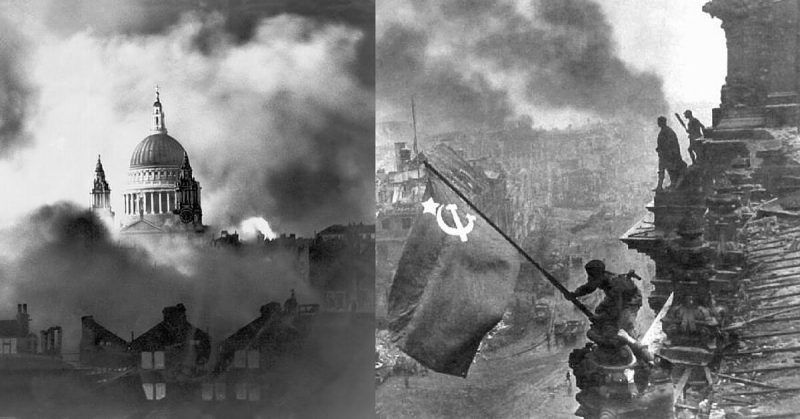War photography has allowed the world to see the truth about the atrocities of some of the world’s biggest conflicts since as early as the Crimean War up to the present day. This article takes a look at some of the most memorable photographs illustrating the history of war.
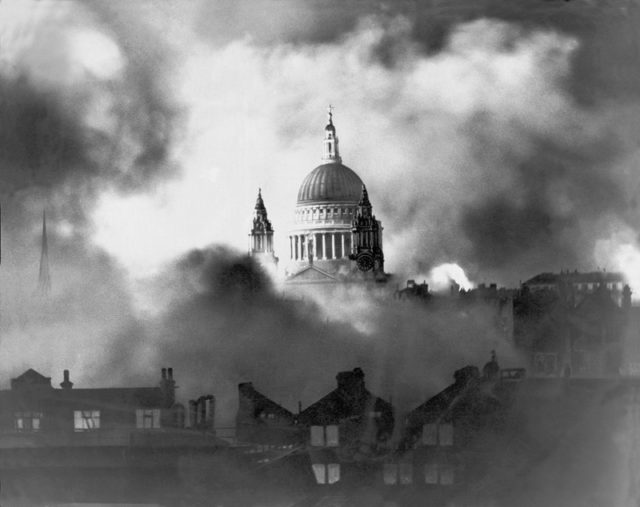
1. St Paul’s Survives.
This iconic photograph was taken by photographer Herbert Mason, The Daily Mail’s chief photographer who was fire watching on top of the roof of the newspaper’s building during the 114th night of the London Blitz in World War Two. It was taken in late December 1940 and the image shows the dome of St Pauls rising from the ashes and smoke surrounding it.
The cathedral’s survival was down to a special group of firewatchers who were urged to protect the cathedral by Prime Minister Winston Churchill. Almost thirty incendiaries hit the cathedral, and one burned through the dome, threatening to set ablaze the dome’s wooden support beams but it fell outwards from the roof onto the Stone Gallery outside and was extinguished.
When the picture was taken almost every building around St Paul’s had succumbed to the German attacks and the cathedral was surrounded by a blazing inferno. Photographer Herbert Mason called the scene ‘unbelievable’ and the image was used in The Daily Mail’s front page the very next day, with a caption calling it ‘War’s Greatest Picture.’
More than a million London houses were destroyed or damaged in the blitz and more than 40,000 civilians killed during the Blitz in which London was bombed by the Luftwaffe for 57 consecutive nights.
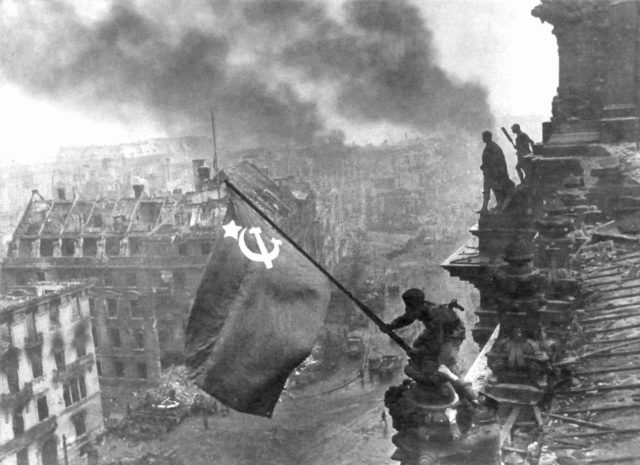
2. Raising a flag over the Reichstag
Another World War Two photograph, that became representative of the Soviet victory over Nazi Germany. The photo was taken by Yevgeny Khaldei, although he was only identified after the fall of the Soviet Union, and depicts two men raising the flag of the Soviet Union on top of the Reichstag building in Berlin.
The Battle of Berlin was the final major offensive in World War Two and lasted from April 20th until May 2nd, 1945. The Red Army considered the Reichstag the symbol of the Nazism, even though it had been sitting closed and damaged since the Reichstag fire in 1933. Still, the Soviet army captured the Reichstag on May 2nd.
There was a pressure for Stalin to take the Reichstag in time for International Workers’ Day on May 1st and reports were received from Marshal G.K. Zhukov stating his troops had captured the Reichstag and hoisted a flag but when correspondents arrived there were no Soviets to be found in the building.
Khaldei scaled the Reichstag to take his picture on May 2nd, with a large flag sewn from three tablecloths by his uncle specifically for this purpose. The official story was told that two soldiers were handpicked; Meliton Kantaria and Michail Yegorov, to raise the flag over the Reichstag but the photographer stated he simply asked two soldiers, who happened to be passing by to help with staging the photograph.
Regardless of the story, it was published in Ogonyok magazine on May 13th, 1945 and became one of the most recognized symbols of Nazi defeat at the end of the Second World War.
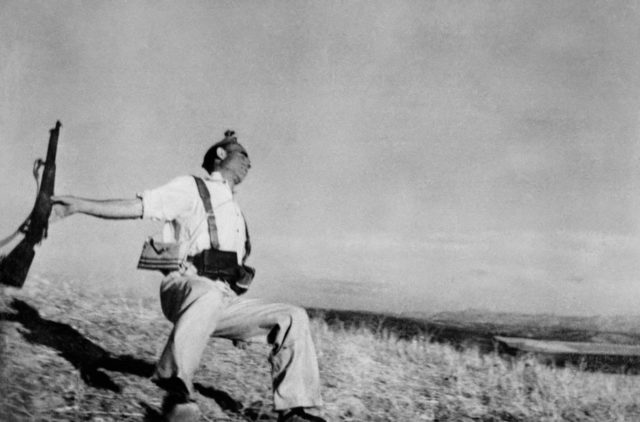
3. The Falling Soldier
The full title of this photograph was “Loyalist Militiaman at the Moment of Death,” and it was taken on September 5th, 1936 by Robert Capa during the Spanish Civil War. There has been much debate about whether or not the photograph was staged.
When it was published it was deemed one of the greatest photographs ever taken, but since the 1970s there have been doubts about its authenticity. It was discovered that other staged photographs were taken at the same time and place.
The man in the picture is an Iberian Federation of Libertarian Youth soldier and it was claimed he was anarchist militiaman Federico Borrell Garcia, however, a 2007 documentary refuted this claim. Robert Capa said he hadn’t even looked when he took the shot but called it ‘probably the best picture [he] ever took.’
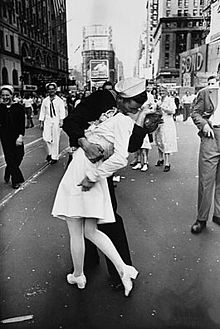
4. V-J Day in Times Square
Also known as V-Day and The Kiss, this photograph by Alfred Eisenstaedt is one of the most famous in the world. It portrays an American soldier kissing a white dressed woman on Victory over Japan Day, August 14th, 1945 in Times Square, New York City. The event was apparently a spontaneous one that happened as the announcement of the end of the war on Japan was made by President Harry S Truman at 7pm and captures the joy and elation that the American public felt at the news.
The photographer was rapidly taking pictures of all the events that day and didn’t take down names or details, because the photo doesn’t show the soldier’s or woman’s faces, there has been much debate of the identities of the couple in the photograph, with different people coming forward to claim themselves as the man or woman.
The photograph was taken just south of 45th street, looking north onto Times Square and soon after it was shot big crowds of people converged on the square. It was published a week later in Life magazine among many photographs of the parties and celebrations in the US after Victory Day.
5. General Nguyen Ngoc Loan executing a Viet Cong prisoner in Saigon
Click here to see image
This famous shot was taken by Eddie Adams on February 1st 1968, depicting a South Vietnamese National Police Chief Nguyen Ngoc Loan publicly executing a captain of a Viet Cong insurgent team. It took place in Saigon during the Tet Offensive.
The photo and footage of the man being killed were broadcast all over the world and invigorated the anti-war movement, it became an iconic photograph for the anti-war movement and even though it won photographer Eddie Adams the 1969 Pulitzer Prize for Spot News Photographer, he later regretted the effect that it had, saying: “The general killed the Viet Cong; I killed the general with my camera.” He even apologized to the General and his family about what the photograph did to his reputation and asserted the photo didn’t tell the whole story.
Eddie Adams also said that still photography can be one of the ‘world’s greatest weapons’, but it often only tells half-truths and can manipulate the situation. War photography has gifted the world with photos of celebrations, and the honest truth of the destruction that comes with it.
All pictures sourced from Wikipedia and reproduced under “fair use,” illustrating the subjects in question.
